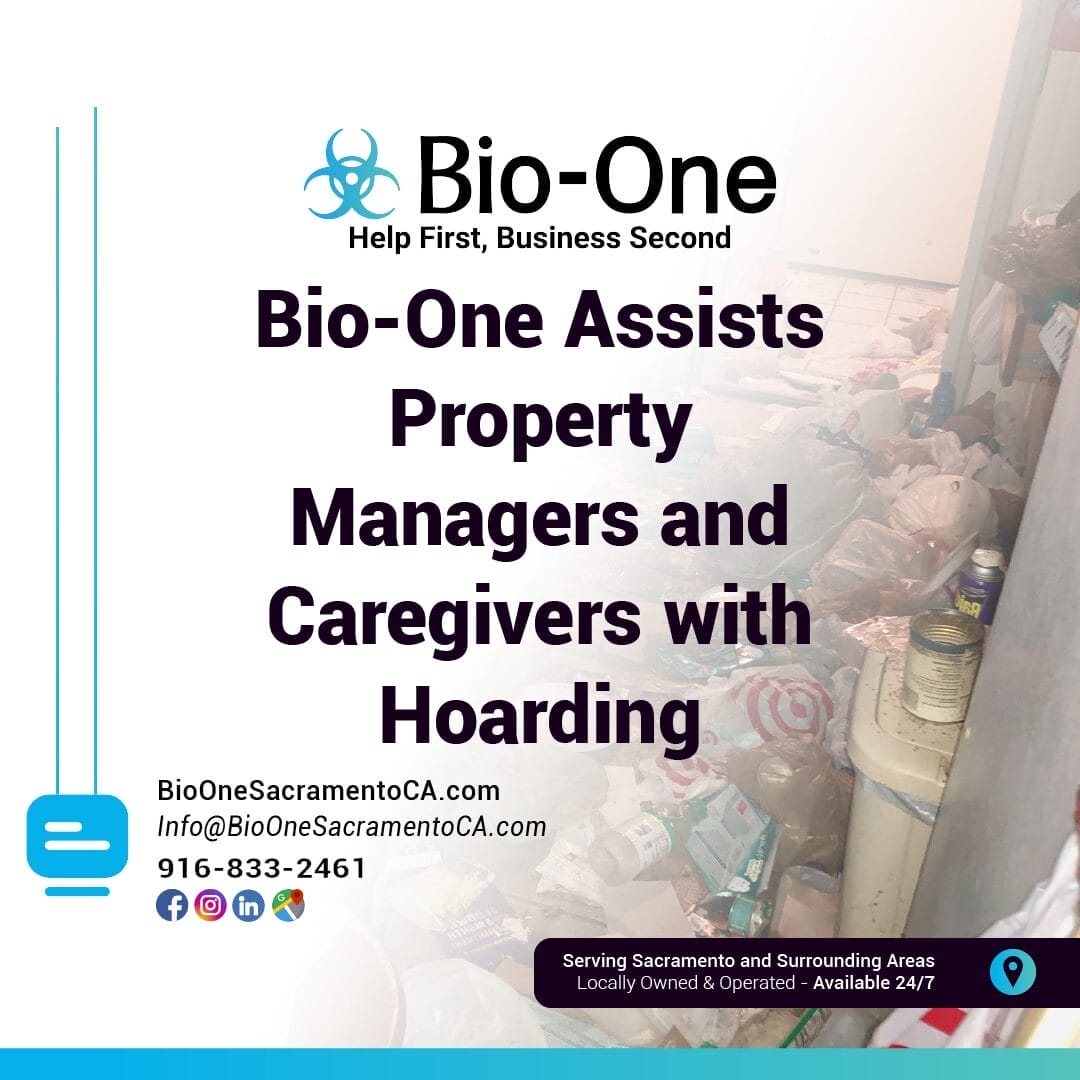
Hoarding situations can be some of the most challenging circumstances property managers, property management companies, and caregivers face. With cluttered environments that may compromise safety and livability, addressing these scenarios requires sensitivity, care, and expertise. At Bio-One, we specialize in compassionate and professional hoarding cleanup services, helping you restore properties with discretion while prioritizing the well-being of tenants and residents.
Whether you're managing a rental property or supporting someone with hoarding tendencies, the right guidance and services can make an overwhelming situation much more manageable.
Hoarding doesn’t just affect the individual—it can impact neighbors, caregivers, and property owners. Ignoring hoarding situations can lead to:
Recognizing the urgency of intervention in these cases is essential, but the process requires a supportive approach. That’s where Bio-One steps in.
At Bio-One of Sacramento, we recognize that hoarding situations extend beyond physical cleanup. These scenarios require an in-depth understanding of emotional and psychological challenges, clear communication, and professional expertise. Here’s how we assist:
We understand the sensitive nature of hoarding and prioritize discretion in every cleanup project. Our team works with understanding and empathy, ensuring residents feel supported rather than judged. Caregivers and property managers can trust us to handle these situations with utmost respect.
Every hoarding situation is unique. Whether clearing out an apartment unit or assisting a long-term tenant, we develop customized cleanup plans suited to the specific circumstances of the property and individual. Our services include:

Hoarding situations often involve biohazards such as mold, pests, or even bodily fluids. Our expert team is trained in biohazard cleaning protocols, ensuring every cleanup is thorough and aligned with health and safety guidelines.
We work closely with property managers, property management companies, and caregivers throughout the process, maintaining open lines of communication. Whether you need guidance on steps to address the situation or updates on the cleanup progress, we're here to provide ongoing support.
Ensuring spaces are clean, safe, and habitable is essential not only for your tenants but also for your business. By addressing potential risks and restoring the property’s condition, we help protect your investment and reputation. For caregivers, we create safe environments that support the well-being of your loved ones.
With years of experience specializing in hoarding situations, Bio-One stands out for our blend of compassion, professionalism, and expertise. Our team is committed to:
When you work with Bio-One, you're partnering with a team that understands the unique challenges of hoarding situations and is dedicated to easing your burden.
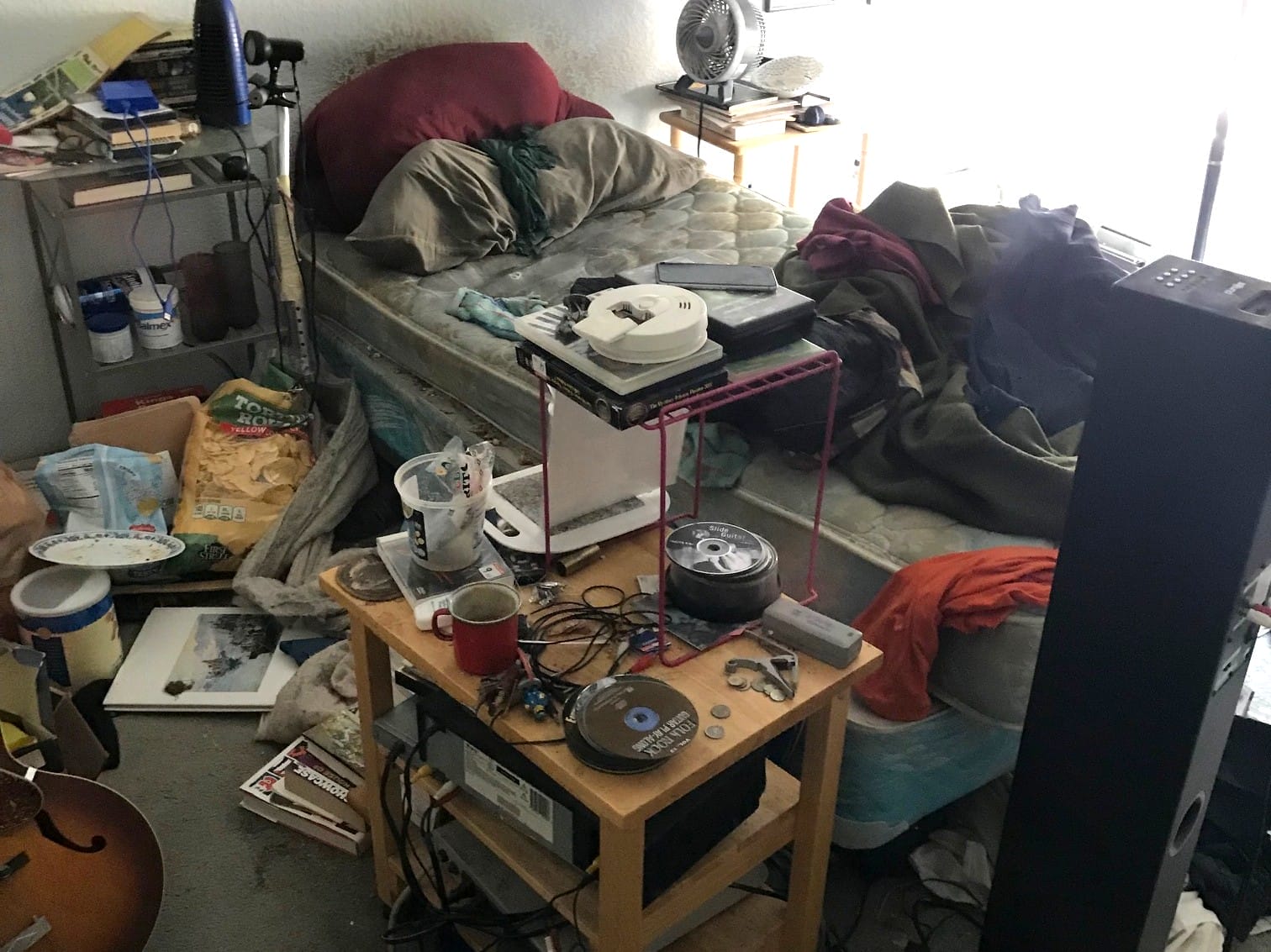
We understand that reaching out for help can feel overwhelming. Many caregivers and property managers hesitate because they think the process will be overly complicated or stressful. At Bio-One, our motto is “Help First, Business Second,” and it’s reflected in everything we do. Our goal is to simplify the process, providing reassurance and actionable solutions from start to finish.
If you're ready to restore a property or support someone in need, don’t wait. Connect with Bio-One today for expert hoarding cleanup services that ease the challenge and put safety first. Contact us now to schedule a consultation and discover how we can help.
As any cat owner knows, the joys of having a feline friend can sometimes be overshadowed by one not-so-pleasant reality—dealing with cat urine odor. This issue goes beyond mere inconvenience; it can affect the comfort of your home and even your health. Luckily, you don't have to resign yourself to the nuisance. Let's explore practical and effective tips for eliminating cat urine odor, to help you maintain a fresh and welcoming home for both humans and pets.
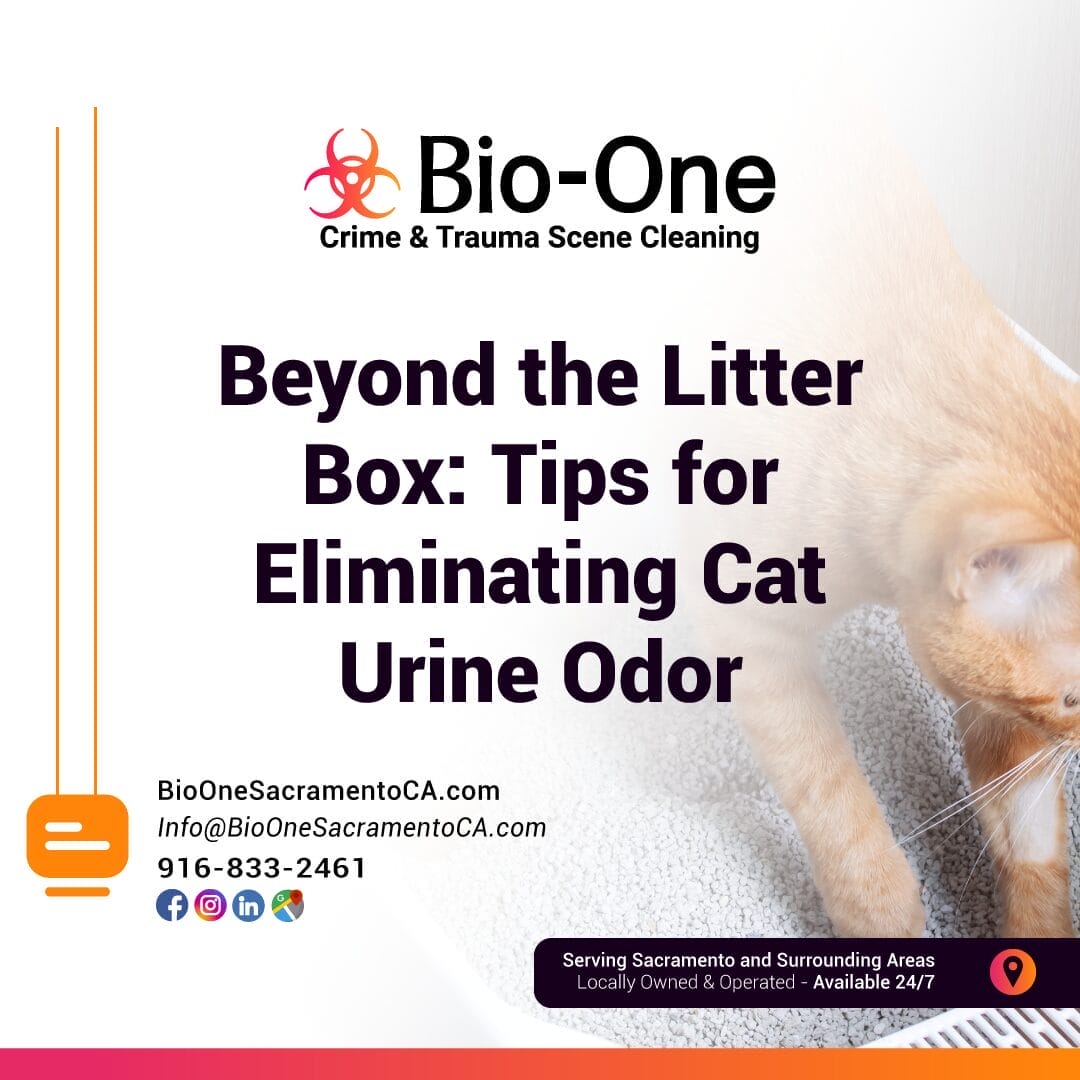
When it comes to eliminating cat urine odor, speed is your best ally. The longer the urine sits, the more concentrated the smell becomes and the harder it is to remove. Start by blotting up as much of the liquid as possible with paper towels or an old cloth. Avoid rubbing, as this can push the urine further into fabrics or carpet fibers.
Enzymatic cleaners are designed specifically for breaking down the proteins in cat urine that cause the lingering odor. These cleaners are available at most pet stores, and they work by neutralizing the odor at its source. Be sure to follow the instructions on the packaging for optimal results. According to a study by the American Society for Microbiology, enzyme-based cleaners can eliminate 99% of odor-causing bacteria.
If you prefer a more natural approach, solutions like baking soda and vinegar can be quite effective. Start by sprinkling baking soda over the affected area to absorb moisture and neutralize odors. Then, spray a mixture of equal parts water and white vinegar. Allow it to sit for a few minutes before blotting dry. This method can be repeated until the odor is gone.
Air quality plays a crucial role in eliminating cat urine odor. Regularly ventilate your home by opening windows and using fans to help circulate fresh air. Installing air purifiers with activated carbon filters can also capture and reduce airborne particles, including pet odors. According to the Environmental Protection Agency (EPA), good ventilation can reduce indoor pollutants significantly.
Sometimes, the root cause of cat urine odor is an inappropriate litter box setup. Ensure your cat's litter box is clean and placed in a quiet, accessible location. Consider using litter with odor control properties and changing it regularly. If you notice your cat avoiding the litter box, it might be time to try a different litter type or box style.
Eliminating cat urine odor doesn't have to be a constant battle. By using these practical tips and solutions, you can ensure your home remains a pleasant environment for everyone. Take action today to combat those pesky odors, and enjoy the company of your feline friend without the unwanted side effects.
If you're struggling with persistent cat urine odor or other challenging cleanup situations, Bio-One of Sacramento is here for you. Contact Bio-One of Sacramento for a thorough assessment and an effective solution to eliminate cat urine odor from your home!
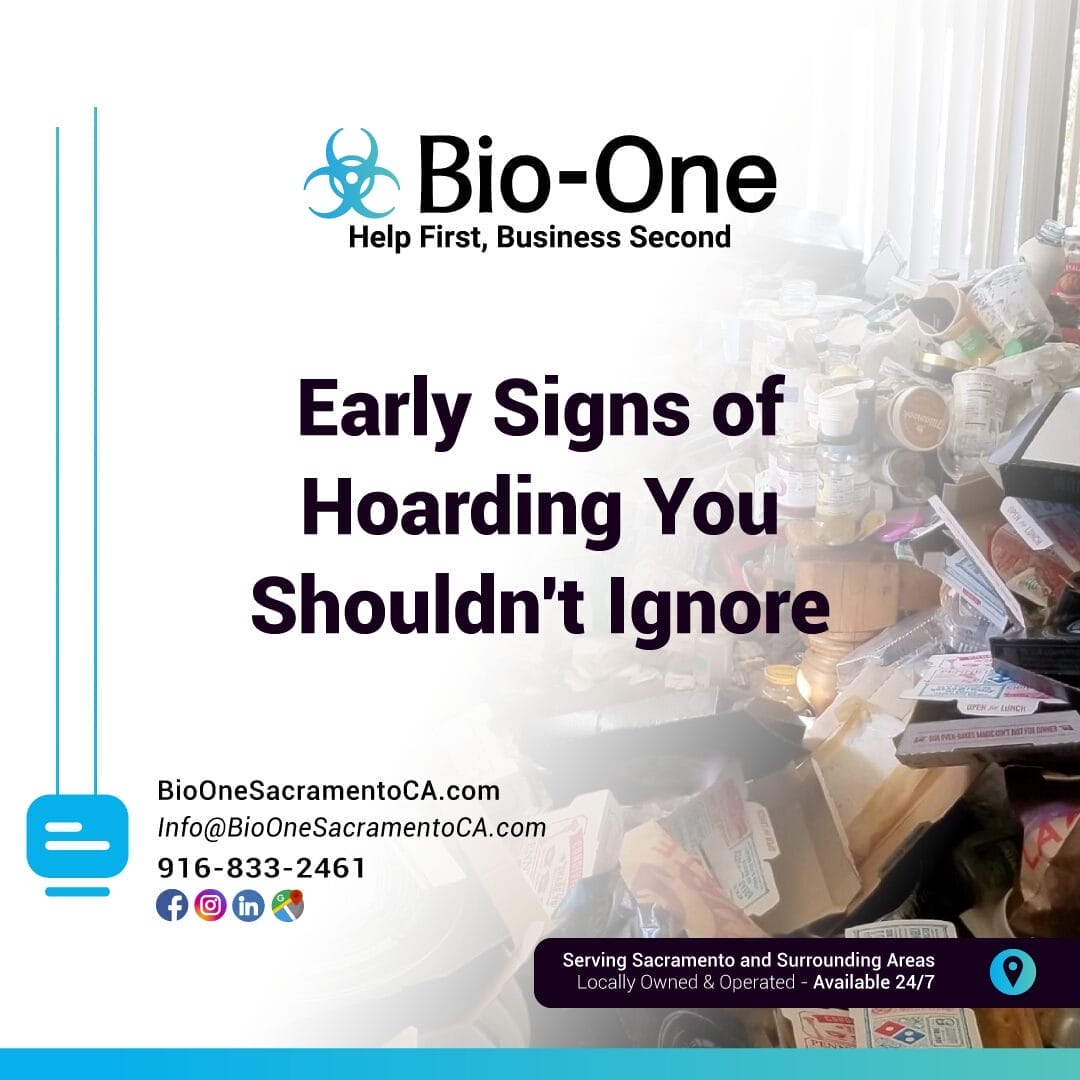
Hoarding is more than just a messy home—it's a complex condition that impacts individuals and their loved ones. Recognizing the early signs of hoarding can be critical in providing timely support and preventing the situation from escalating.
If you're concerned about a family member or client, look out for these potential early indicators:
Spotting these signs early allows family members, mental health advocates, and professional organizers to step in with understanding and support. Left unaddressed, hoarding can lead to safety hazards, strained relationships, and emotional distress.
At Bio-One of Sacramento, we understand that hoarding is a sensitive and challenging issue. Our team is trained to approach these situations with compassion and professionalism, supporting individuals in their journey towards a healthier living environment.
Compassionate conversations are key. If you suspect someone you care about is struggling with hoarding tendencies, approach the topic gently and without judgment. Reassure them that help is available. Professionals can assist in restoring a safe, comfortable living space while respecting their emotional needs.
Hoarding solutions are most successful when guided by empathy, patience, and expertise. Raising awareness about these early signs of hoarding can make all the difference. Share this post to help others recognize the signs—and provide a path to support.
If you're in need of resources or assistance, don't hesitate to reach out to experts who specialize in hoarding support and cleanup services. Help is available.
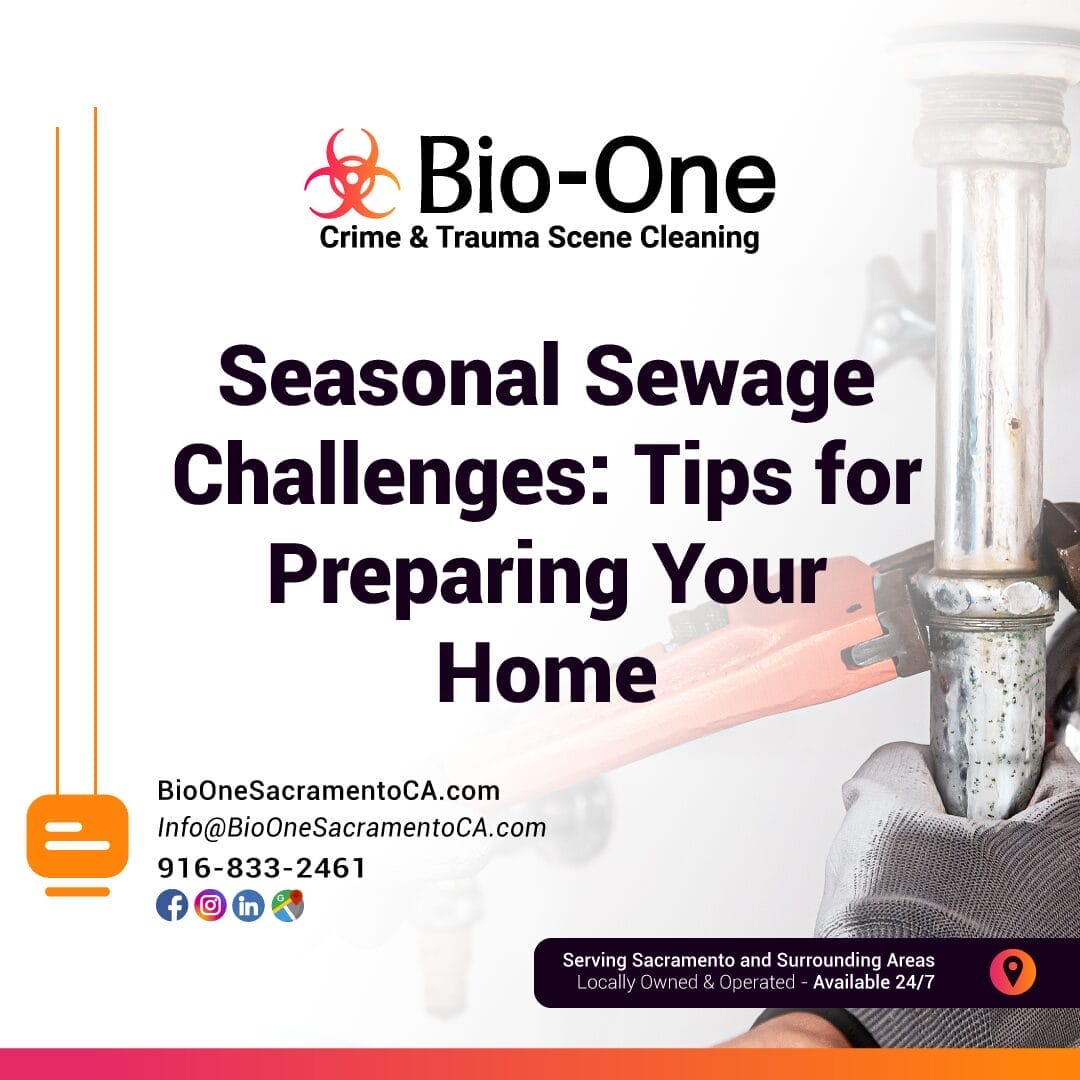
Seasonal changes can bring more than shifts in weather—they can also bring unexpected challenges to your home, particularly when it comes to sewage problems in the house. From backups to unpleasant odors, these issues can disrupt your daily life and create significant stress. The good news? With a little preparation and know-how, you can prevent many of these problems and keep your home safe and comfortable year-round.
Here’s a look at common sewage challenges tied to seasonal changes, along with practical tips for tackling them head-on.
Each season can pose its own set of risks for your home’s sewage system. Knowing what to expect can help you take proactive measures.
The increased rainfall in spring can overwhelm drainage systems. When heavy rains or snowmelt push your system beyond its capacity, it may lead to backups or standing water in your yard. Homes with older pipes are particularly vulnerable to these issues.
Hot, dry weather can cause shifting soil, which puts strain on underground sewage lines. Root intrusion is also more likely during summer as trees seek out moisture, potentially cracking or clogging your pipes.
Falling leaves and other debris can end up in your gutters, downspouts, and outdoor drains. If not cleared, this can lead to blockages that affect your overall drainage system, including your home’s sewage line.
During winter, frozen pipes are a major concern. When temperatures drop, water inside pipes can freeze and expand, potentially causing cracks or burst pipes. Sewage backing up into your home during freezing temperatures is one of the least pleasant scenarios a homeowner can face.
A little effort upfront can save you from the hassle (and expense) of dealing with sewage issues down the road. These tips will help you prevent problems before they start.
Ensure that outdoor drains and gutters are free of debris, especially during fall and spring, when leaves and heavy rain are common. Clogged gutters and drains can redirect water toward your home, overwhelming your sewage system. Clean them regularly or consider installing gutter guards for added protection.
Routine inspections of your plumbing system can identify potential issues before they escalate. Here’s what to focus on:
Many sewage problems in the house issues start inside. To reduce the risk of blockages:
When temperatures drop, take steps to keep your pipes from freezing:
If your home frequently experiences sewer backups due to heavy rains or floods, consider installing a backwater valve. This one-way valve prevents sewage from flowing back into your house. It’s an investment that can save you from the nightmare of basement flooding and sewage backup.
While many sewage problems can be managed with preventative care, some require expert attention. Call a professional plumber if:
Stay ahead of sewage problems in the house by maintaining your plumbing, addressing problems early, and knowing when it’s time to call in a professional. By taking these steps, you’ll not only avoid messy situations but also ensure your home remains a safe, comfortable haven year-round.
Dealing with a sewage backup can be overwhelming and hazardous. At Bio-One of Sacramento, we specialize in professional sewage backup cleaning services to ensure your property is safe, clean, and restored to its original condition. Our team is equipped with the expertise and advanced tools necessary to handle even the toughest sewage situations, adhering to strict safety and sanitation protocols.
We understand how urgent these issues can be, which is why we provide fast, reliable, and compassionate support 24/7. Trust Bio-One of Sacramento to resolve sewage backups efficiently, so you can regain peace of mind. Contact us today to learn more about our services and assistance tailored to your needs!
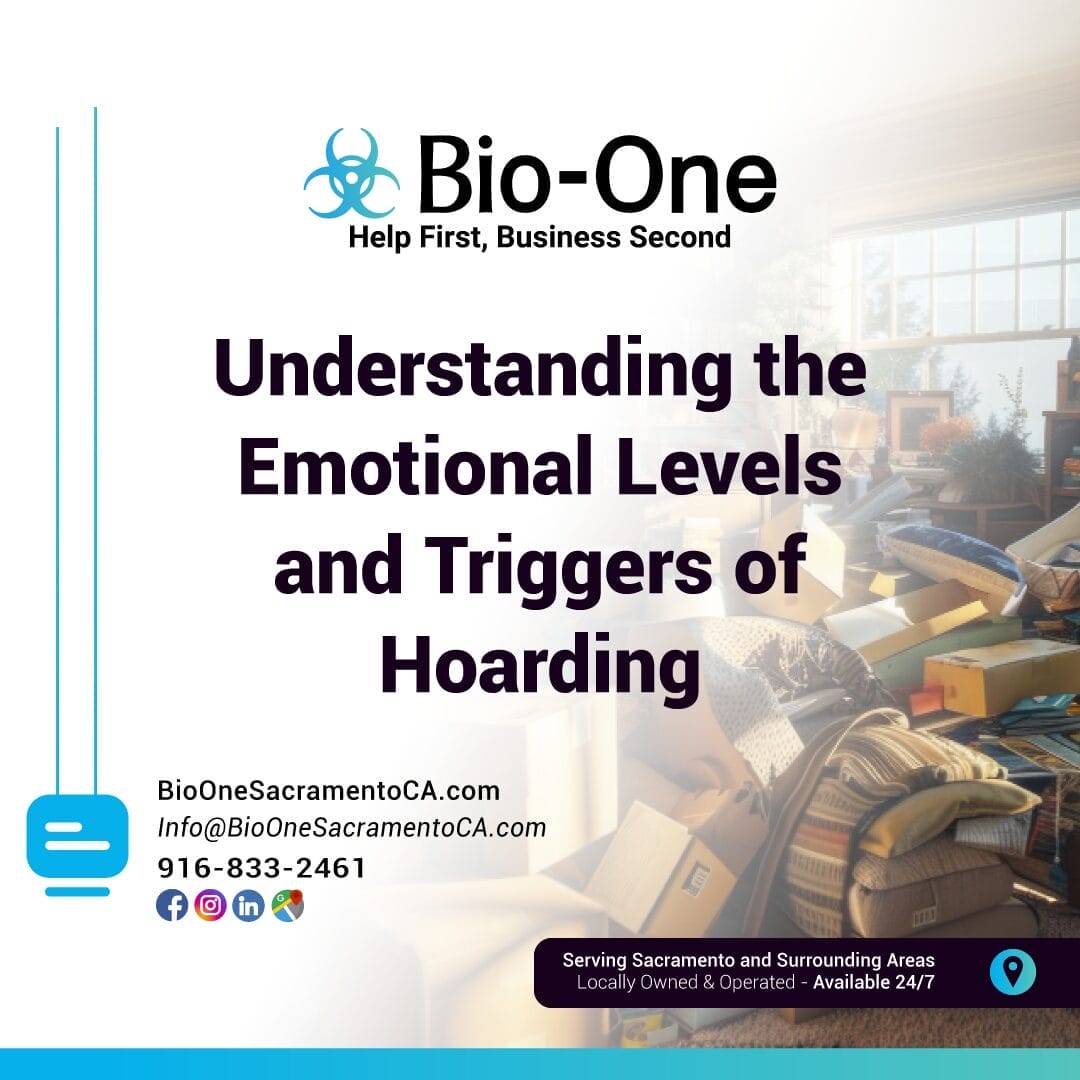
Hoarding is more than just clutter or disorganization—it’s a deeply emotional and often misunderstood condition. For many, it isn’t about the items themselves but rather the feelings and memories connected to them. Understanding the emotional triggers of hoarding, along with its layers, can be the first step toward offering compassion to those who struggle and fostering a real, palpable change. If you or a loved one is dealing with a hoarding scenario, this information will help you..
At its core, hoarding isn’t about being messy or unwilling to declutter. It’s a condition often tied to deep emotional distress. Most people form attachments to certain items: a family photo, a handwritten letter, or a souvenir from a cherished vacation. However, for someone with hoarding tendencies, this emotional attachment goes much deeper. Objects can become symbols of safety, comfort, or even identity.
For instance, someone might hold onto old clothes because they remind them of a time when they felt happier or more confident. Throwing away these items might feel like erasing a part of themselves. Over time, these emotional connections build up, making it increasingly difficult to part with possessions, even when the items are no longer functional or needed.
To understand hoarding, we need to look at the emotional triggers that often fuel the behavior. These can vary from person to person, but common triggers include:
Living with hoarding can be emotionally exhausting—not just for the individuals but also for loved ones. Some common emotional responses include:
Addressing hoarding behavior requires more than just clearing out a space. It involves understanding and addressing the emotional triggers behind the behavior. If you or a loved one struggles with hoarding, here are some steps to take:
Hoarding is rooted in human emotions like fear, hope, and love. It’s important to approach it with kindness rather than judgment. Change can happen with the right support, but it takes time and patience.
If you or someone you know is struggling to break free from the grip of hoarding, remember that you’re not alone. Bio-One of Sacramento is ready to help.
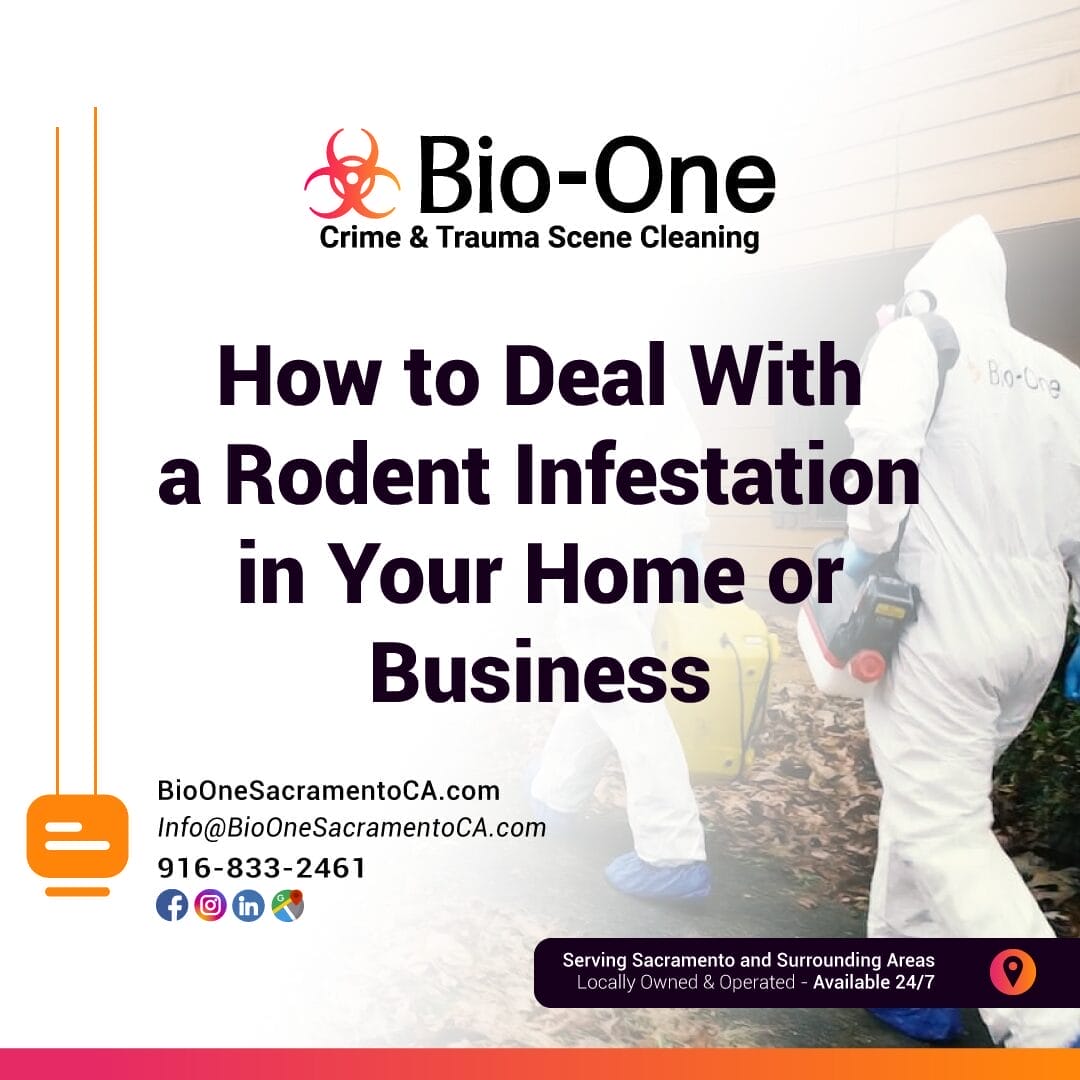
Rodent infestations can be incredibly stressful, whether in your cozy home or a bustling business. Rats and mice bring more than just unease: they carry disease, damage property, and quickly create an environment that's less than ideal for living or working. Our latest blog will walk you through the signs of a rodent infestation, and the necessary steps to identify, manage, and prevent these bothersome creatures from entering our homes or businesses.
If left unchecked, rodent infestations can escalate rapidly. Mice and rats reproduce fast! One pair can result in hundreds within a year. Here are key reasons why swift action is critical:
The sooner you address the issue, the easier it is to control.
Wondering if you might have uninvited guests? Here are some tell-tale signs of rodent activity to look out for:
Rodent droppings are small and dark, often found near food sources or along walls. Urine stains might also be noticeable under UV light.
Rats and mice chew constantly to keep their teeth sharp. Watch for gnawed wires, wood, or food packaging.
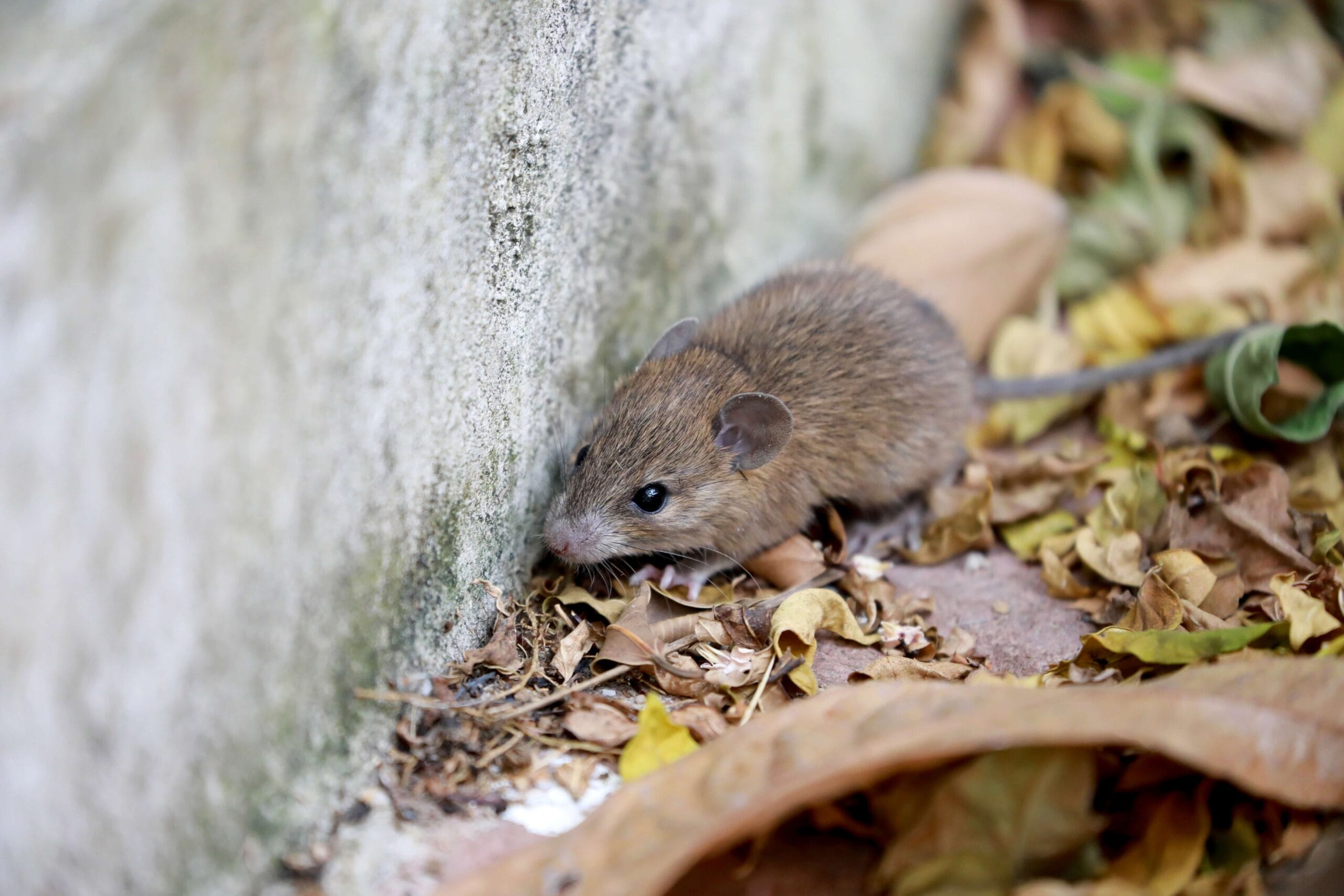
If you hear scurrying, scratching, or squeaking, especially at night, it might mean rodents are active in your walls or attic.
Rodents build nests from shredded paper, fabric, or insulation. Finding this material in hidden areas could indicate an infestation.
A musty, pungent smell could result from rodent urine or even a deceased rodent in hidden spaces. If you notice these signs, it’s time to take action.
If you’re dealing with a rodent infestation, follow these professional steps to regain control:
Determine whether you're dealing with rats or mice. Mice are smaller, while rats are larger and more aggressive.
Inspect your property thoroughly for any holes, cracks, or gaps where rodents might enter. Seal these with durable materials like steel wool or caulk to prevent further access. Here's a more detailed guide on how to prevent rodent infestations:
Bio-One of Chula Vista | Identifying and Cleaning Rodent Droppings - Bio-One Can Help
Reduce the rodents’ access to sustenance by taking the following steps:
Use traps and rodenticide bait strategically. Popular methods include:
Please remember that DIY methods can sometimes be insufficient for larger infestations.
For widespread or persistent infestations, hiring experts is highly recommended. Professionals use advanced tools and techniques to eradicate the problem effectively. They also provide peace of mind by ensuring proper cleanup and prevention.

Once the rodents are gone, clean and sanitize all affected areas to remove droppings, hair, and urine that might carry germs. Use gloves and a disinfectant to avoid exposure to harmful bacteria.
At Bio-One of Sacramento, our compassionate and professional team is here to provide the support and expertise you need in addressing the aftermath of rodent presence, including thorough cleaning and disinfection of affected areas.
With years of experience in biohazard remediation and cleaning services, Bio-One of Sacramento has built a strong reputation for delivering exceptional results and ensuring the safety and well-being of our clients. Our team follows strict protocols, utilizing industry-leading techniques and equipment to clean and sanitize areas contaminated by rodent droppings, hair, and urine.
You can trust us to provide thorough and meticulous cleaning services, giving you peace of mind and a safe environment.
Effective prevention can save you from dealing with future issues. Follow these simple tips to keep your home or business rodent-free.
Routinely check for any holes, cracks, or crevices where rodents could enter. Pay special attention to basements, attics, and storage areas.
A clean environment is less attractive to rodents. Maintain a regular cleaning schedule for your property, focusing on:
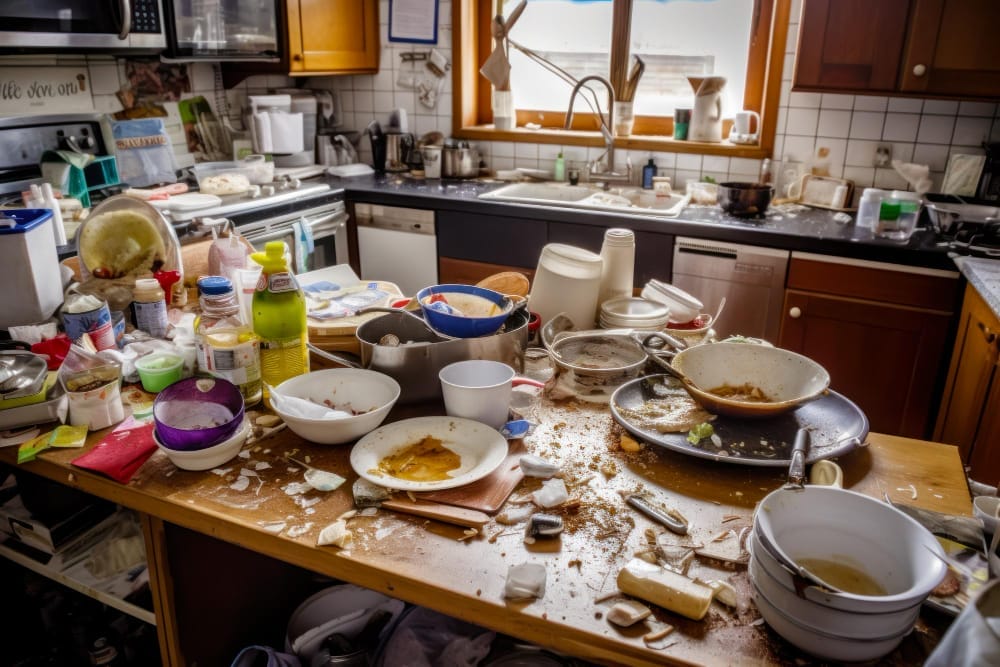
Trim bushes and trees away from your property to prevent rodents from using branches to gain entry. Clear out any outdoor debris where rodents might hide.
Ultrasonic rodent deterrents or tamper-proof bait stations can serve as additional security measures for high-risk areas.
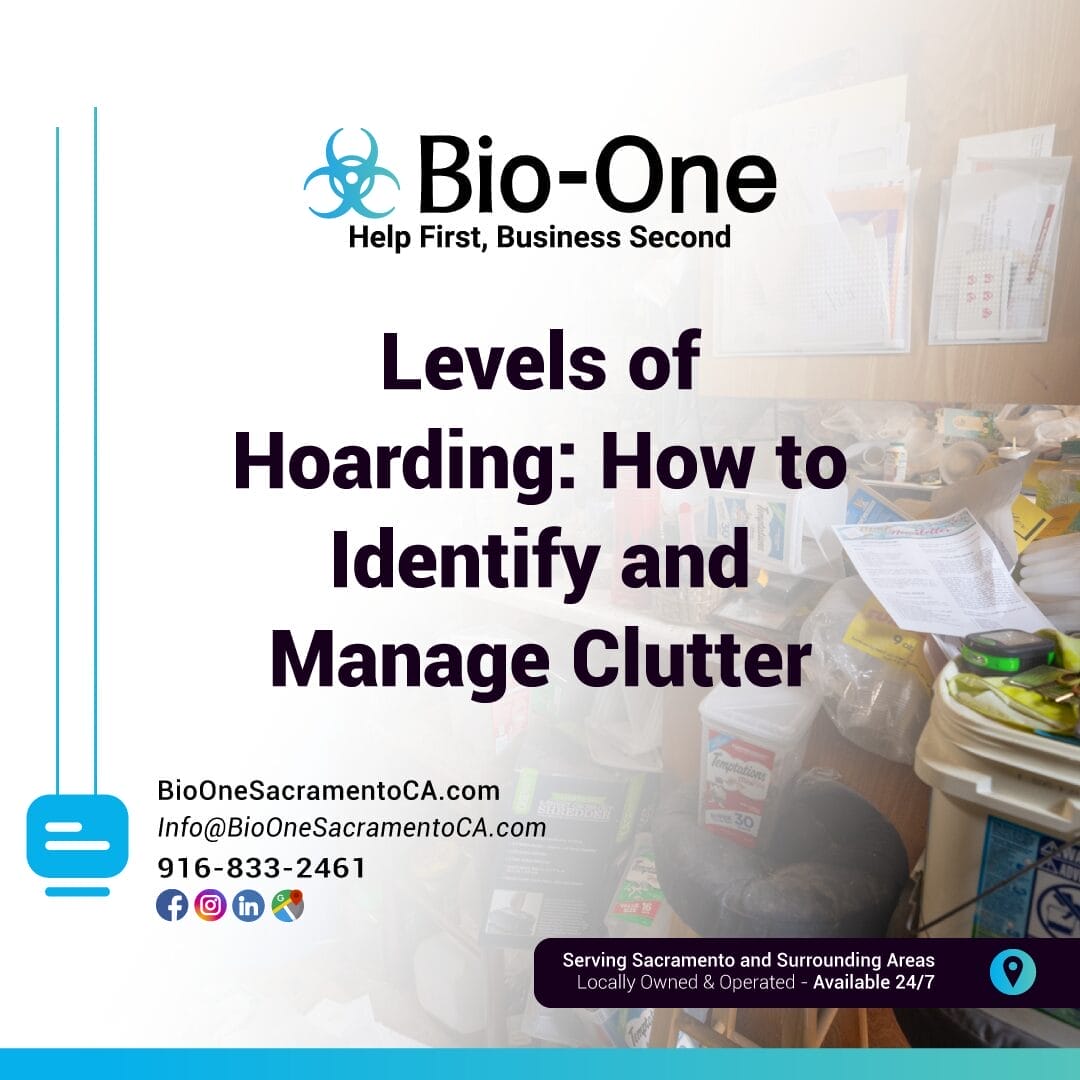
Hoarding is much more than a messy home—it’s a complex issue that can affect one’s emotional well-being, relationships, and physical safety. Whether you’re a family caregiver supporting a loved one, a mental health advocate, or someone personally dealing with clutter, understanding the levels of hoarding is an essential first step to tackling the problem with empathy and practical solutions.
This guide will walk you through the five distinct levels of hoarding, explain how to identify the seriousness of a hoarding situation and offer actionable tips to manage clutter effectively and compassionately.
The International OCD Foundation identifies five levels of hoarding to classify severity. These levels provide a clear framework to address clutter issues based on their complexity.
What it Looks Like:
Level 1 is the mildest form of hoarding. Homes at this level may appear relatively tidy at first glance but often have small, manageable clutter in certain areas like closets, countertops, or under beds. Walkways remain clear, and the space is functional.
How to Manage It:
There’s often a psychological barrier rather than a physical one when managing Level 1 clutter. Use these tips to keep it under control:
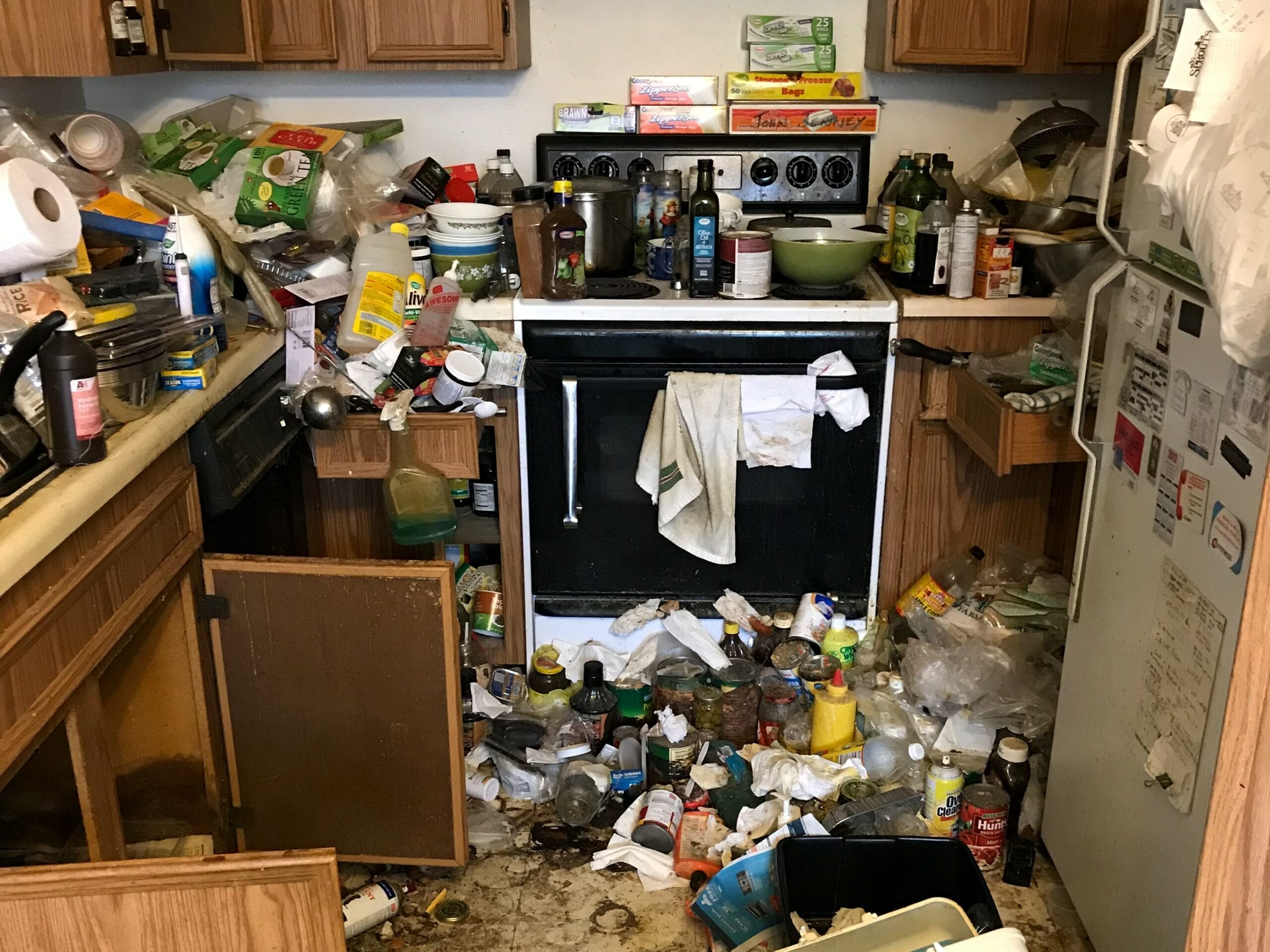
What it Looks Like:
At Level 2, clutter becomes more noticeable. Rooms may feel cramped, and one area of the home—such as an office or spare room—might start to lose its functionality. Mild odors or pet-related issues may also emerge.
How to Manage It:
Addressing Level 2 requires gentle but structured intervention:
What it Looks Like:
Level 3 indicates a turning point where the clutter impacts the living space more significantly. Key warning signs include blocked walkways, unusable appliances, and noticeable dirt or odors. There may also be a reluctance to invite guests into the home.
How to Manage It:
This stage requires compassionate involvement from loved ones or professionals. Here’s how to move forward:
What it Looks Like:
Level 4 hoarding is characterized by severe clutter, sanitation issues, and safety hazards like mold, broken appliances, or structural damage. Often, multiple rooms are inaccessible, and significant help is needed to restore the home’s livability.
How to Manage It:
At Level 4, working with professional cleaning services and mental health specialists becomes essential:
What it Looks Like:
The most severe form of hoarding includes extreme clutter throughout the entire home, severe sanitation challenges, and significant health and safety risks. The house may be completely uninhabitable, and external agencies (such as local authorities) might need to intervene.
How to Manage It:
Level 5 hoarding requires a coordinated and multi-faceted approach:
No matter where clutter or hoarding falls on this scale, compassionate and strategic action can make a world of difference. Here are some universal tips to keep in mind:
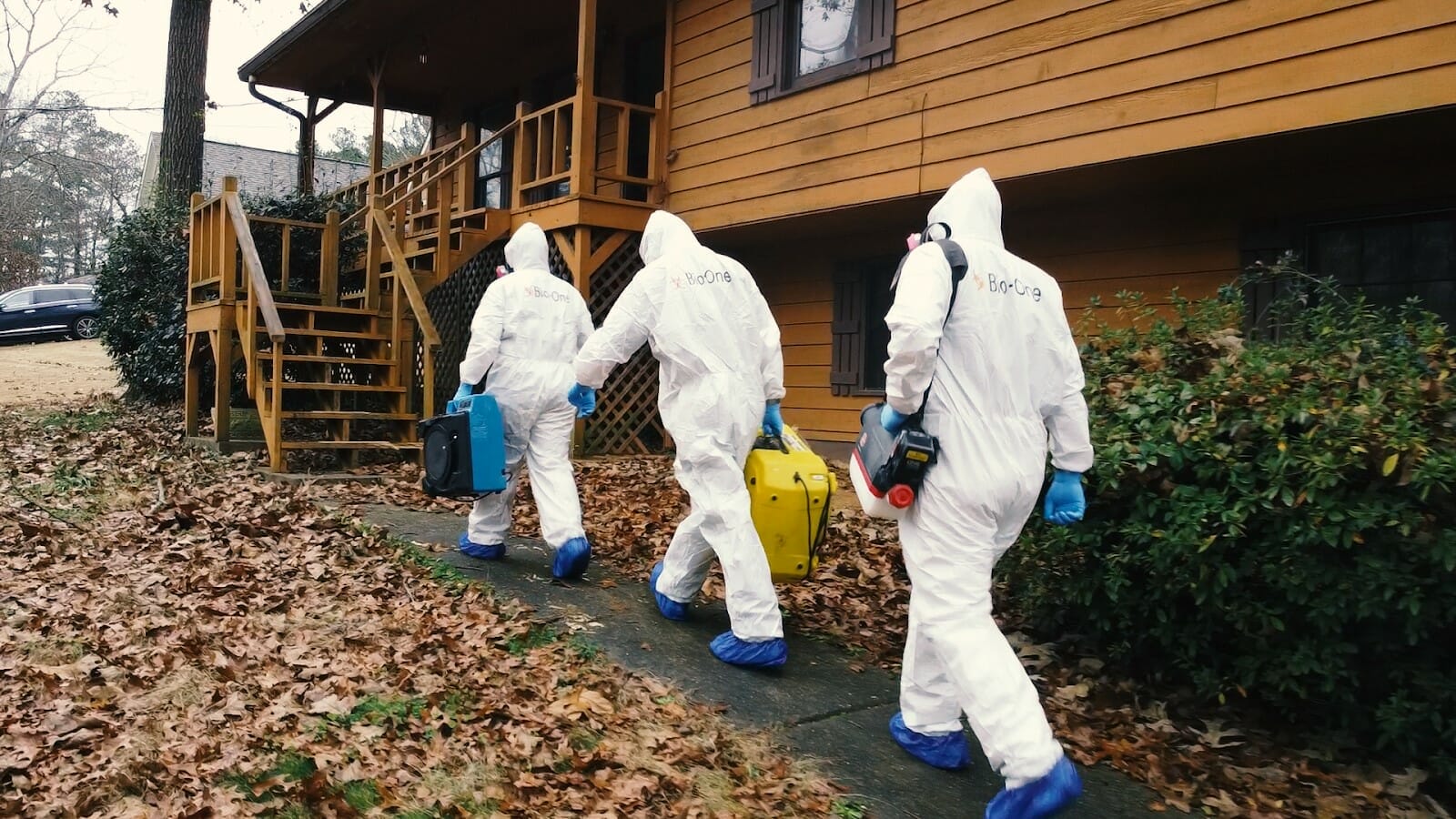
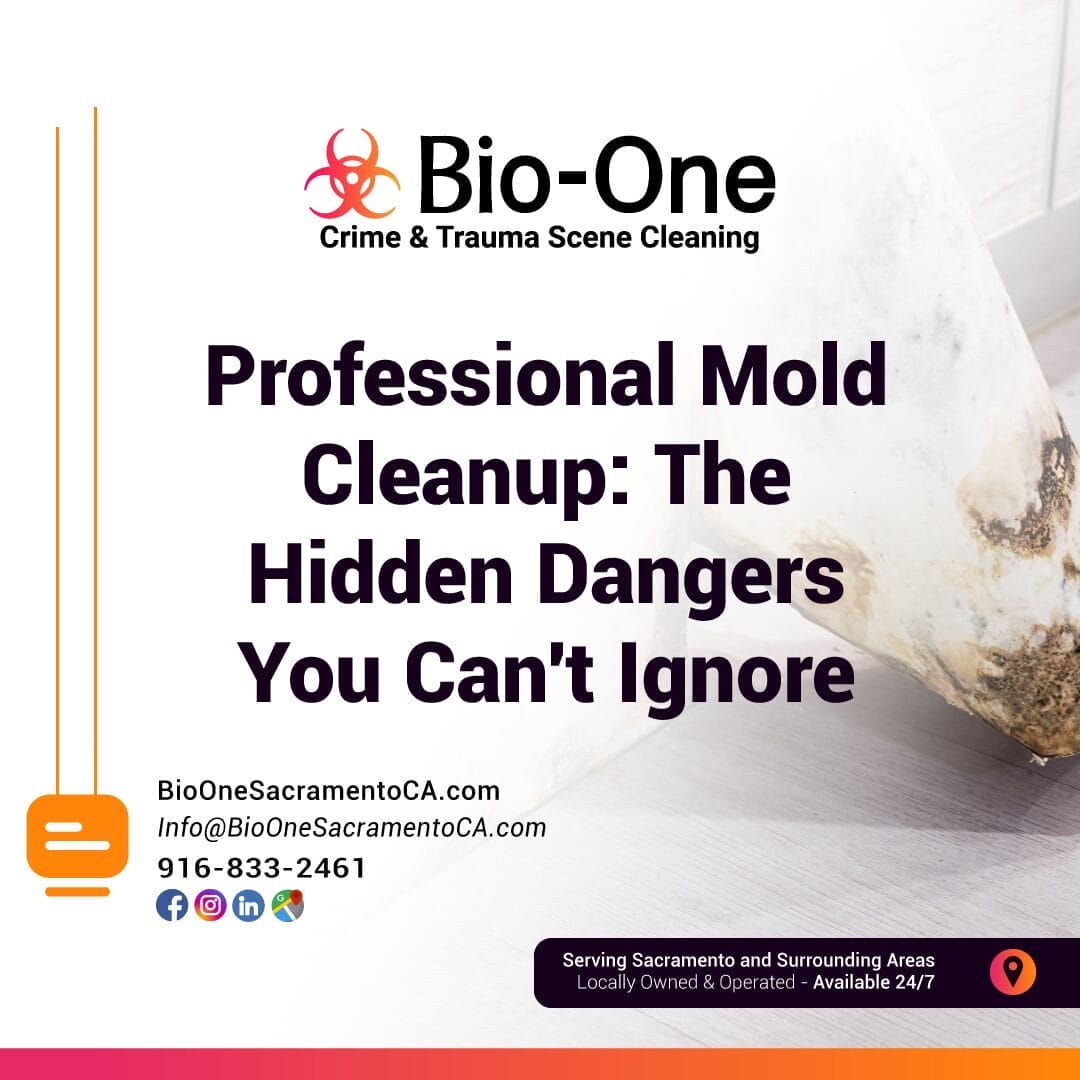
Mold is a silent intruder that can wreak havoc on your home and your health. For homeowners and property managers, understanding why professional mold cleanup is crucial is not just about maintaining property value; it's about safeguarding the health of anyone who inhabits these spaces. This blog post will explore the different types of mold that may invade your property, the health implications they pose, and the importance of enlisting professional help to tackle this pervasive problem.
Mold is not a singular entity but a collection of fungi that thrive in moist environments. It can appear as black, green, or white patches, often found lurking in damp corners or behind walls. Some common household molds include Aspergillus, Cladosporium, and Stachybotrys (often referred to as black mold). Each type brings its own set of challenges and potential health risks. Recognizing these variations is the first step toward addressing the issue effectively.

Though mold can grow outdoors without causing much harm, indoors it becomes a different story. Homes provide an ideal breeding ground for these fungi, particularly in areas where moisture tends to accumulate, like bathrooms, basements, and kitchens. Unchecked mold can quickly spread.
While some molds can be cleaned with simple household solutions, others require specialized treatment due to their thickness and potential toxin release. Knowing what you're dealing with will help you choose the most effective cleanup method.
Mold exposure can cause many health problems, especially for those with pre-existing respiratory conditions, compromised immune systems, or allergies. Even individuals who are otherwise healthy can experience symptoms like headaches, coughing, and skin irritation when exposed to mold over time. This makes understanding the health risks associated with mold exposure paramount to protecting yourself and others.
Children and the elderly are particularly vulnerable to mold-related health issues. Their respiratory systems are either still developing or not as robust, making them more susceptible to the adverse effects of mold spores.
In severe cases, prolonged mold exposure can lead to more serious health complications, such as bronchitis or even mold-induced asthma.
Identifying the signs of mold infestation early can save time, money, and peace of mind:
In addition to visual and olfactory clues, unexplained physical symptoms can also point to a mold problem. If occupants frequently experience respiratory issues or allergy-like symptoms when indoors, but these symptoms improve when they leave the premises, mold could very well be the culprit.
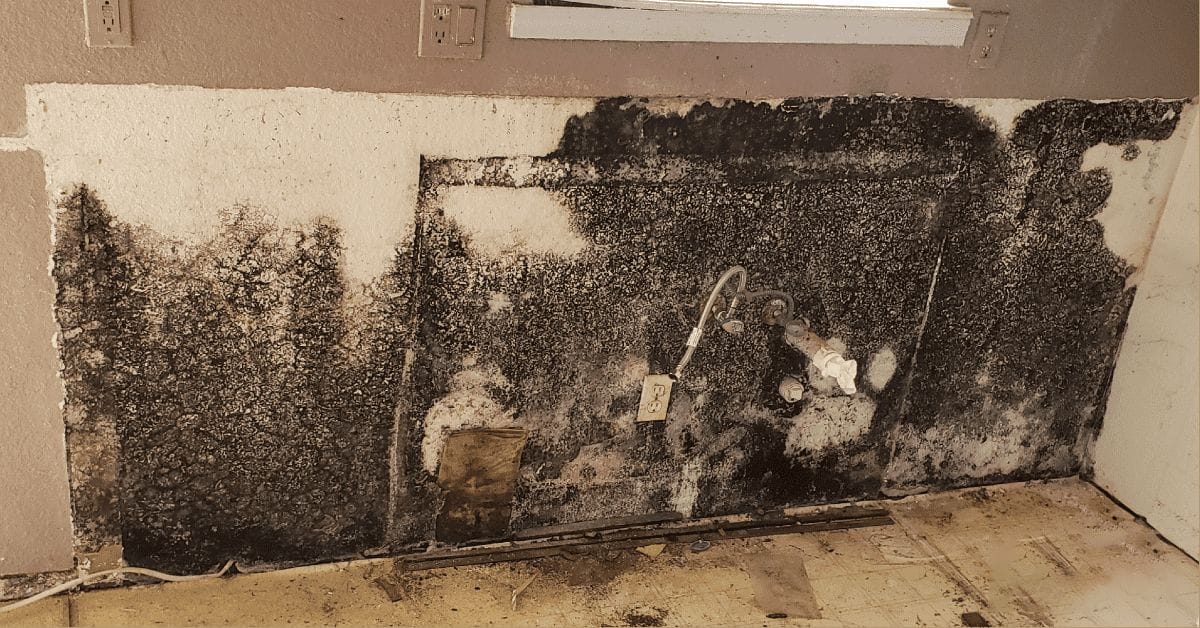
While DIY solutions might seem appealing due to their cost-effectiveness, they often lack the thoroughness required for complete mold eradication. Professional mold cleanup services bring specialized equipment and expertise to the table, the type of equipment one normally doesn't have immediately at hand.
Now, what's the difference between choosing a professional mold cleanup service vs. tackling the problem on your own? Professionals are trained to assess the extent of mold infestation accurately. They can determine the type of mold present and devise a comprehensive treatment plan tailored to the specific needs of the property. This ensures not only the removal of visible mold but also addresses hidden spores that can lead to re-infestation.
Engaging professional services also minimizes the risk of spreading mold spores during cleanup. Improper handling can disperse spores into the air, exacerbating the problem.
After successful remediation, prevention becomes the focus.
Maintaining a low indoor humidity level is critical in preventing mold growth. Using dehumidifiers or air conditioners can help achieve this, especially in moisture-prone areas like basements and bathrooms. Regularly inspecting and maintaining plumbing systems is also crucial to prevent leaks that could lead to mold-friendly conditions.
Implementing these preventive measures not only safeguards your property but also ensures a healthier living environment. Regular checks and maintenance can help catch minor issues before they escalate, saving you the stress and cost of future remediation efforts.
Mold not only impacts health but also affects property value. Prospective buyers are often deterred by the presence of mold, fearing potential health risks and costly repairs. This can lead to lower offers or the need for price reductions to facilitate a sale. Even if mold is not immediately visible, a history of mold issues can influence buyer perceptions.
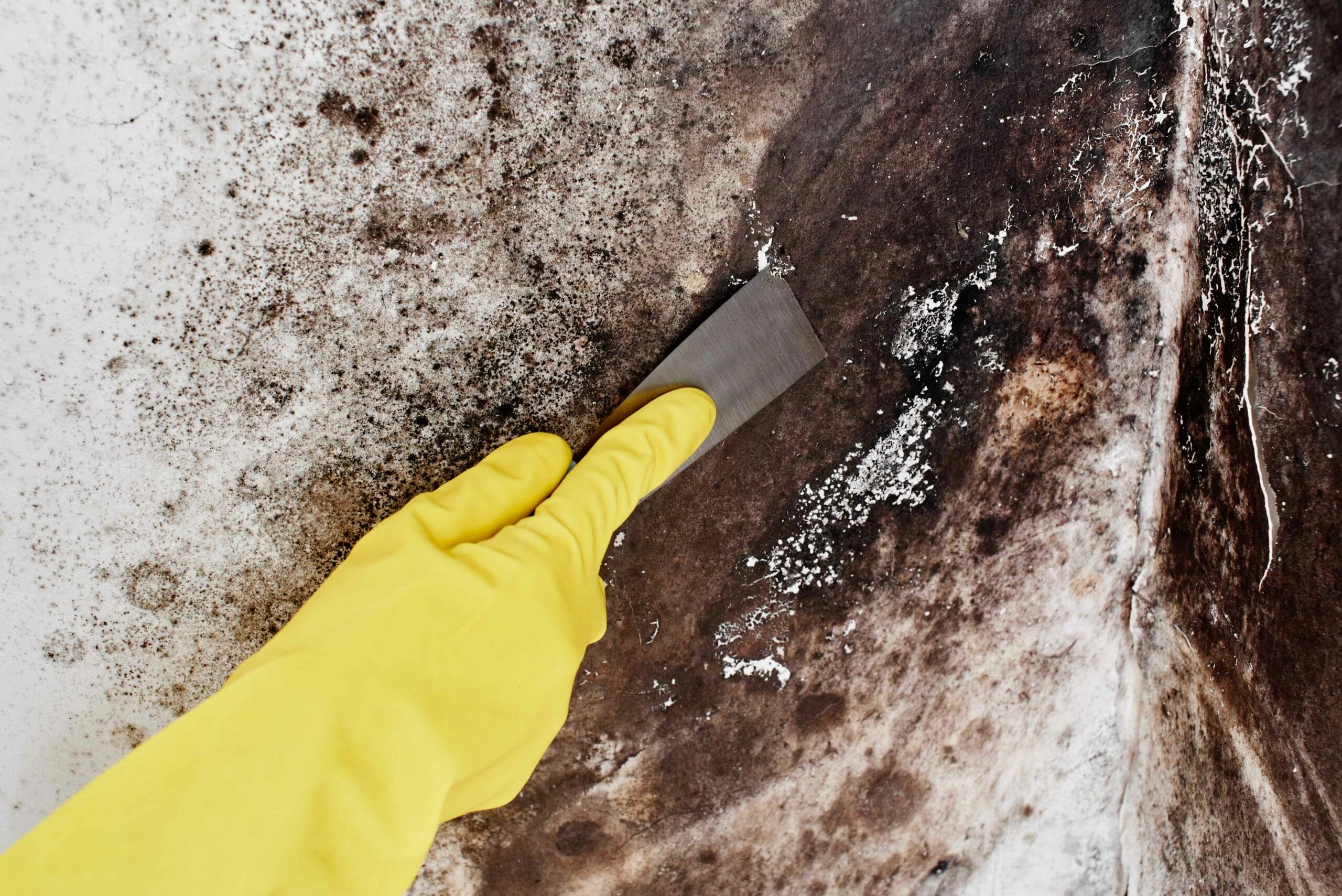
Property managers should consider regular inspections and maintenance to keep properties mold-free and maintain their value in the competitive real estate market. Addressing mold issues promptly not only preserves property value but also enhances reputation. Properties known for their safety and cleanliness attract more interest and can command higher prices, underscoring the importance of professional mold cleanup.
When faced with a mold issue, it is crucial to choose the right professional cleanup service. Bio-One of Sacramento offers effective mold remediation services. Our team of certified technicians understands the importance of timely response and thorough cleanup. We work closely with our clients to develop customized solutions tailored to their specific needs. Additionally, we work with all major Insurance carriers and can help navigate the claims process, providing peace of mind during a stressful situation!
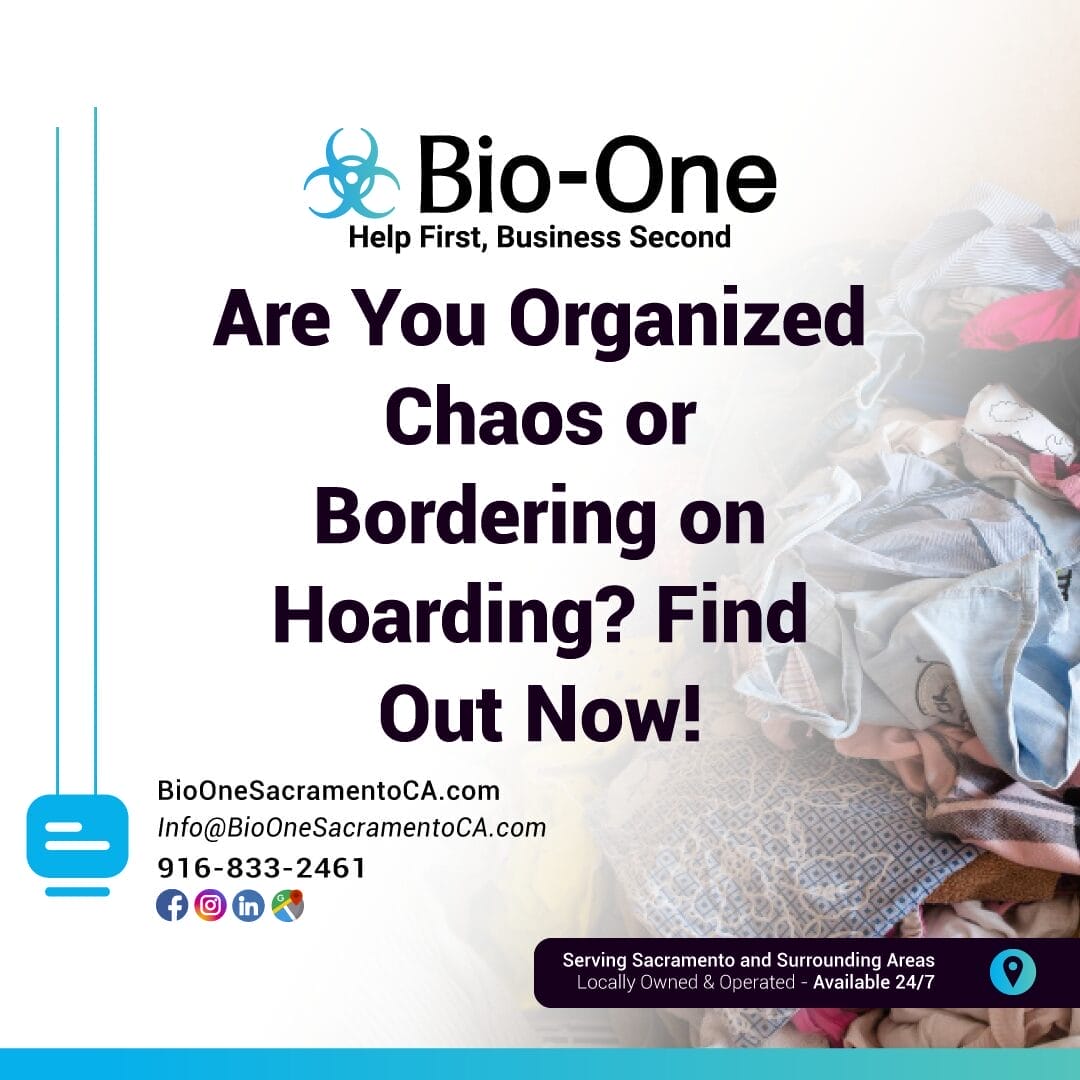
Ever wondered if your cluttered room is a sign of creativity or just chaos? Or perhaps your neatly organized drawer is the result of meticulous planning rather than an aversion to mess. Let's unravel the mystery of whether you're a person living in organized chaos or teetering on the edge of hoarding! Dive in as we explore the nuances between these two states, providing insights and practical tips for managing your home, if necessary.
Organized chaos is a term often used to describe a seemingly disordered space that still functions effectively. For many, this form of organization is a creative haven. It's the place where ideas flourish amidst stacks of papers and scattered tools. The beauty lies in its ability to look messy yet deliver results.
An important aspect of organized chaos is that it works uniquely well for those who thrive on visual reminders. Instead of neatly filed documents, you may find value in a sticky note empire sprawled across your desk. Studies show that for some, these visible markers aid memory retention and task management.

However, it's crucial to distinguish between purposeful disorder and plain clutter. The key is functionality. If your space enables you to efficiently complete tasks and doesn't induce stress, you've likely mastered organized chaos. Now, if we could offer a piece of advice, we would encourage you to not let the chaos take over your entire home. Keeping certain areas, like your bedroom or kitchen, tidy and clutter-free can help maintain a sense of balance and calm amidst the chaos.
On the other end of the spectrum lies hoarding: a distinctive mental health condition. Hoarders often struggle to discard items, resulting in an excessive accumulation of possessions. These items may hold sentimental or practical value, but the sheer volume can become overwhelming and hinder daily functioning.
Unlike organized chaos, hoarding can cause severe distress and impact not only the individual's life but also those around them. Hoarding typically needs professional intervention and support to address the underlying emotional and psychological causes.

Do you often find yourself defending your "mess"? Typical phrases like "I know exactly where everything is" resonate with many living in organized chaos. It's not just an excuse; it's a testament to a system that, while unconventional, serves a purpose. This form of organization is personal and intuitive. Tell-tale signs include:
Embrace your personal style of organization while also being mindful of potential hoarding tendencies. Regular cleaning sessions can help prevent excess accumulation and promote overall well-being. Remember, functionality and reducing stress should always take precedence over perfection. Keep what serves a purpose in your life, let go of what no longer brings joy, and find peace amidst the chaos.
Research has shown that living in organized chaos can stimulate new ideas by breaking traditional patterns. However, this benefit diminishes if the chaos creates overwhelming distractions. The clutter mustn't become so intrusive that it stifles the very creativity it was meant to nurture.
Striking the right balance involves setting boundaries within your space. Allocate areas for free-flowing ideas while keeping other zones tidy for focused work. This division can help maintain the creative spark without succumbing to the downsides of excessive disarray.
Hoarding differs significantly from organized chaos. It can affect anyone, regardless of personality or background, and often stems from underlying emotional issues. Key signs include holding onto items of little or no value, experiencing distress at the thought of discarding possessions, and accumulating clutter to the point where it impairs function. Unlike organized chaos, hoarding lacks the benefit of a system.
It's important to approach this topic sensitively. Hoarding is not merely a choice to live amidst mess; it's a mental health condition that may require professional intervention.
An organized home offers numerous benefits beyond just aesthetics. It reduces stress by eliminating clutter-related distractions, allowing you to focus better on tasks. An orderly environment can boost productivity and enhance overall well-being.
Additionally, organization simplifies decision-making. An uncluttered space means less time spent searching for items and more time dedicated to meaningful activities. This efficiency translates into a more balanced and fulfilling lifestyle.
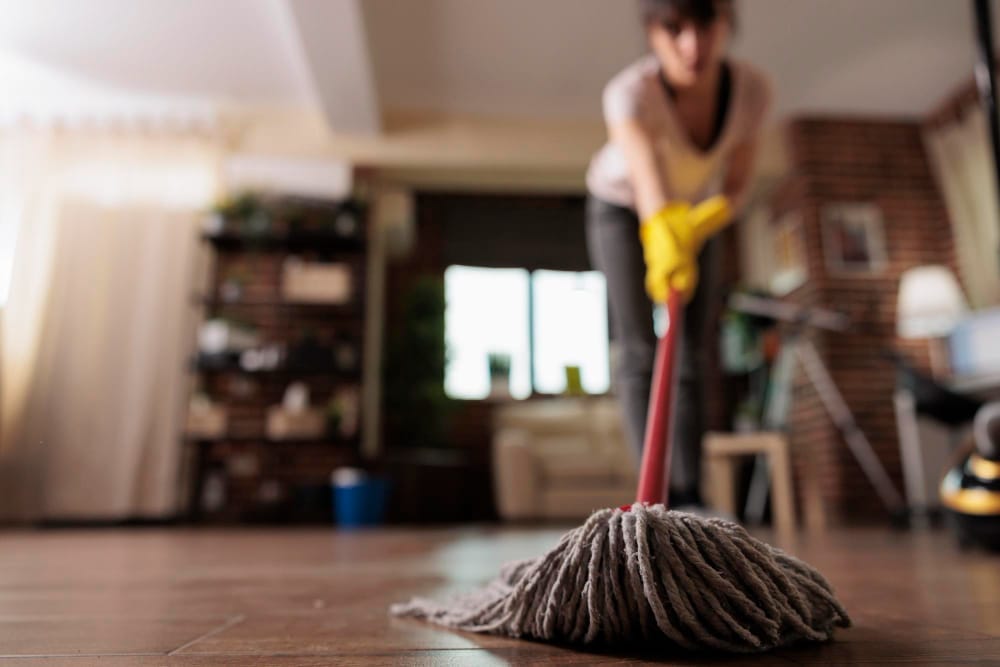
Finally, an organized space promotes creativity. By clearing mental and physical space, you're open to new ideas and innovative thinking. The sense of accomplishment from a tidy area can motivate you to tackle challenges with renewed energy and enthusiasm.
If organizing your space feels insurmountable or if clutter significantly impacts your quality of life, you can trust professionals to help you. Hiring a professional organizer or a cleaning company can provide an objective perspective and practical strategies for decluttering and maintaining an organized home.
For those struggling with hoarding, it's essential to seek help from trained therapists who specialize in treating Hoarding Disorder. These professionals can address underlying emotional issues and offer support as you navigate the process of decluttering.
At Bio-One of Sacramento, we are here to help you transform your home into a safe and organized environment. As a specialized hoarding cleanup company, we have extensive experience and resources to assist those struggling with hoarding in the Sacramento County area. Our team is well-connected to a network of professionals, including therapists and other experts, who can provide comprehensive support throughout the decluttering process.
We are committed to offering guidance and assistance, so you know that you never feel alone as you take the first steps towards reclaiming your house and your home. Trust us to provide the help and encouragement you need to get started on your journey!
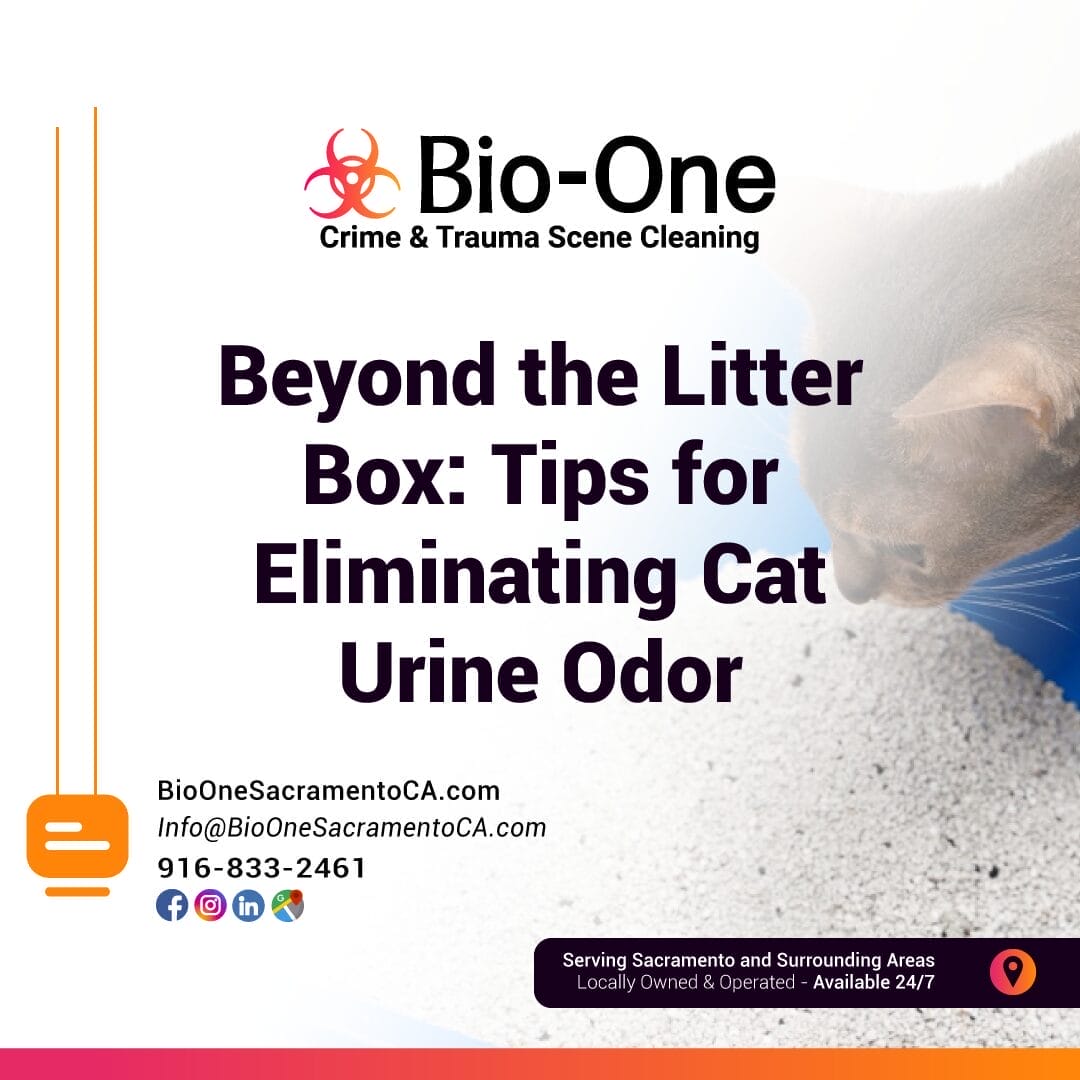
As any cat owner knows, the joys of having a feline friend can sometimes be overshadowed by one not-so-pleasant reality—dealing with cat urine odor. This issue goes beyond mere inconvenience; it can affect the comfort of your home and even your health. Luckily, you don't have to resign yourself to the nuisance. Let's explore practical and effective tips for eliminating cat urine odor, to help you maintain a fresh and welcoming home for both humans and pets.
When it comes to eliminating cat urine odor, speed is your best ally. The longer the urine sits, the more concentrated the smell becomes and the harder it is to remove. Start by blotting up as much of the liquid as possible with paper towels or an old cloth. Avoid rubbing, as this can push the urine further into fabrics or carpet fibers.

Enzymatic cleaners are designed specifically for breaking down the proteins in cat urine that cause the lingering odor. These cleaners are available at most pet stores, and they work by neutralizing the odor at its source. Be sure to follow the instructions on the packaging for optimal results. According to a study by the American Society for Microbiology, enzyme-based cleaners can eliminate 99% of odor-causing bacteria.
If you prefer a more natural approach, solutions like baking soda and vinegar can be quite effective. Start by sprinkling baking soda over the affected area to absorb moisture and neutralize odors. Then, spray a mixture of equal parts water and white vinegar. Allow it to sit for a few minutes before blotting dry. This method can be repeated until the odor is gone.
Air quality plays a crucial role in eliminating cat urine odor. Regularly ventilate your home by opening windows and using fans to help circulate fresh air. Installing air purifiers with activated carbon filters can also capture and reduce airborne particles, including pet odors. According to the Environmental Protection Agency (EPA), good ventilation can reduce indoor pollutants significantly.
Sometimes, the root cause of cat urine odor is an inappropriate litter box setup. Ensure your cat's litter box is clean and placed in a quiet, accessible location. Consider using litter with odor control properties and changing it regularly. If you notice your cat avoiding the litter box, it might be time to try a different litter type or box style.
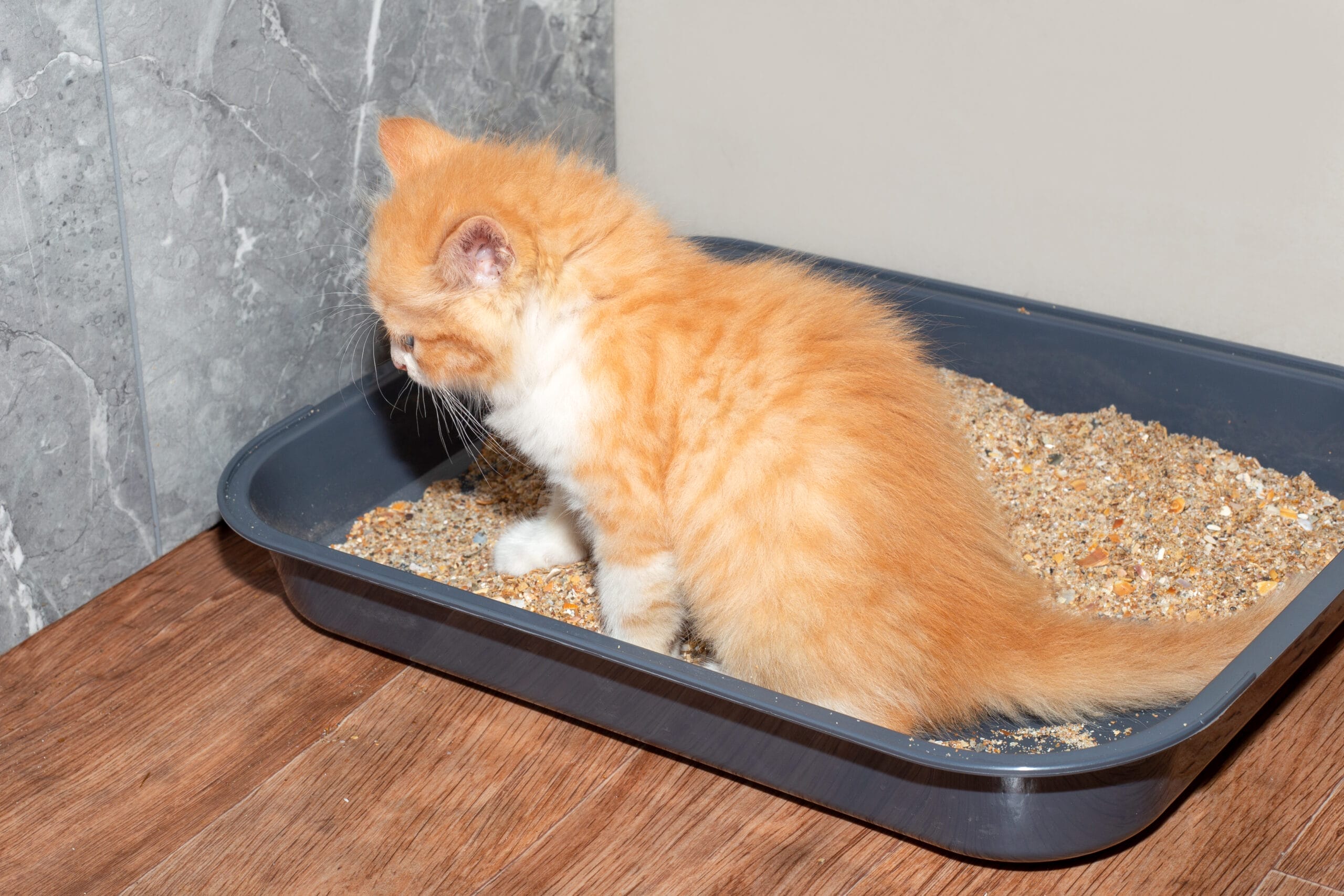
Eliminating cat urine odor doesn't have to be a constant battle. By using these practical tips and solutions, you can ensure your home remains a pleasant environment for everyone. Take action today to combat those pesky odors, and enjoy the company of your feline friend without the unwanted side effects.
If you're struggling with persistent cat urine odor or other challenging cleanup situations, Bio-One of Sacramento is here for you. Contact us for a thorough assessment and an effective solution to eliminate cat urine odor from your home!